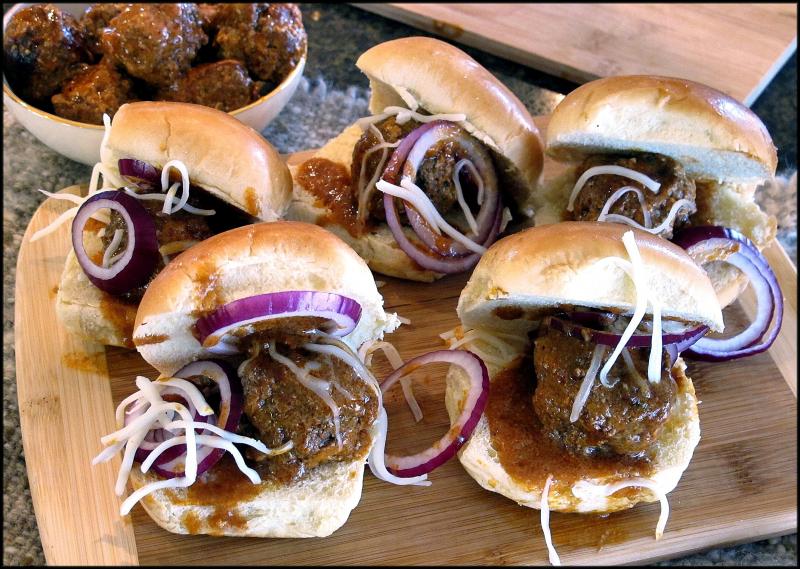Hungry for comfort food? Try a slow cooker
With the recent stretch of windy weather, I was reluctant to go outside and found myself hungry for comfort food. Definitions of "comfort food" often refer to a special childhood meal and positive associations with people, places or events. Some suggest that one signature of comfort food is high carbohydrate or sugar content. For me, comfort is all about how the kitchen smells when something wonderful is cooking.
Over time, I've learned how to tell when the stew needs more stock, the tomato sauce is thick enough, or the cookies are just starting to brown - all from the aromas that drift through the kitchen, into the living room and (sometimes) upstairs to the office. That probably explains why I'm less interested in a stir-fry than a slow-simmered dish, and I frequently turn to my slow cooker.
The device is familiar to most of us: an electric cooker with a removable glass or ceramic insert and tight-fitting lid that cooks food at low heat over a long period of time. What may be less familiar is the history behind the slow cooker. (As an aside, the device is called a slow cooker, while Crock-Pot is one manufacturer's brand name.) Fans can thank inventor Irving Naxon, who applied for a patent in 1936 for the prototype of what we now know as the slow cooker. His design for a food-heating device featured a portable insert nestled over a heat source to facilitate low, even heating of the food inside. By 1940, Naxon received his patent and brought the device to market as the Naxon Beanery.
What inspired Naxon to design such a thing? His Lithuanian mother's stories about a Jewish bean stew called cholent. This traditional dish had to be cooked for close to 24 hours, and Naxon's mother relied on the town's bakery. She and her neighbors would bring their pots of cholent to the village baker on Friday afternoon. The pots would be placed in the large oven shortly before it was turned off at the end of the day, in observance of the start of the Jewish sabbath at sundown. The oven retained enough residual heat to slowly cook the pots of stew so they would be ready to eat after services the following day. This allowed observant Jews to refrain from working on the sabbath and still enjoy their cholent.
In the early 1970s, Naxon sold his design to Rival Manufacturing, which rebranded the Beanery to market it as the Crock-Pot. Their target audience was the growing number of working mothers who could put ingredients in the pot before leaving for the office and come home to a cooked meal. Rival's advertising slogan claimed the Crock-Pot "cooks all day while the cook's away," helping them sell millions.
Now owned by the Jarden Corporation, Crock-Pot still offers a convenient way to transform inexpensive cuts of meat to juicy, fork-tender dishes while using very little energy. The key components are a metal housing with the heating element in which rests a ceramic or stoneware container with a glass lid that's fitted with a rubber gasket to sit in a groove around the edge of the insert. As the liquid inside heats and vaporizes, it condenses and collects in the groove, creatinga low-pressure seal. The nature of the ceramic insert allows it to serve as a heat reservoir, so the contents are continually heated without any loss of moisture. The results are sure to fill your kitchen with enticing aromas.
As with any product that remains popular for decades, Crock-Pots have evolved. You can find them with NFL and NCAA team logos, automatic stirring capability and remote access through a smartphone app. Today's Crock-Pot is a far cry from the one that caused so many problems for the characters in the television series "This is Us." I've included three of my favorite dishes to make in a slow cooker, including the meatballs served as sliders in the photo. They all qualify as comfort food.
Slow Cooker Meatballs
1 T butter
1 diced onion
3 minced garlic cloves
1/3 C whole milk
1 egg
1/2 C bread crumbs
1 lb lean ground beef
1 t chili powder
1/2 t salt
1/4 t pepper
1/2 C ketchup
1/4 C mustard
1 T Balsamic vinegar
1/4 C brown sugar
Melt the butter in a small skillet; sauté onion until translucent. Stir in garlic and cook until fragrant; remove from heat. In a large mixing bowl whisk together milk, egg and bread crumbs. Add onions, garlic, beef, chili powder, salt and pepper. Form into walnut-sized balls and place in a single layer in the bottom of the slow cooker. Whisk together remaining ingredients in a measuring cup and pour over meatballs. Cover and cook on low for 8 hours.
Enchilada Casserole
2 16-oz cans black beans
1 lb frozen corn kernels, thawed
2 C crushed tomatoes
1 1/2 C salsa
1 6-oz can tomato paste
1 4-oz can green chiles, drained
1 t cumin
1 t chili powder
1 C shredded Cheddar cheese
6 corn tortillas
Rinse and drain the beans; place in a large mixing bowl. Add corn, crushed tomatoes, salsa, tomato paste, chiles, cumin and chili powder. Stir to combine. Spread 1/3 of mixture evenly across the bottom of slow cooker. Sprinkle with 1/3 C cheese and cover with 2 tortillas. Repeat twice more. Cover and cook on low for about 5 hours. Serve with additional cheese and sour cream.
Applesauce
10 apples
2/3 C sugar (optional)
1/2 C orange juice
1 t cinnamon
1/2 t nutmeg
Peel, core and chop the apples; place in a slow cooker. Whisk together remaining ingredients and stir into the apples. Cover and cook on low for 8 hours.





















































